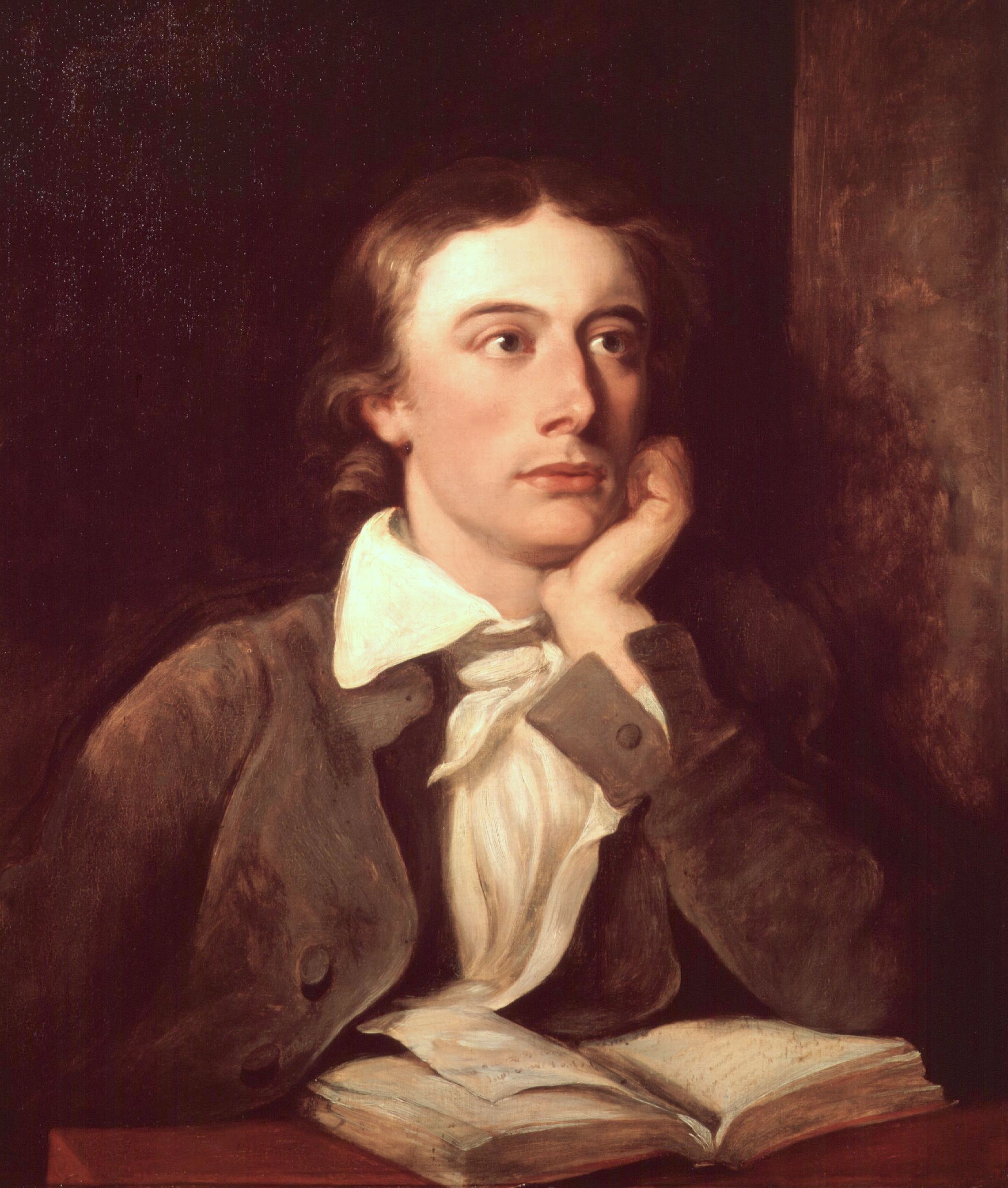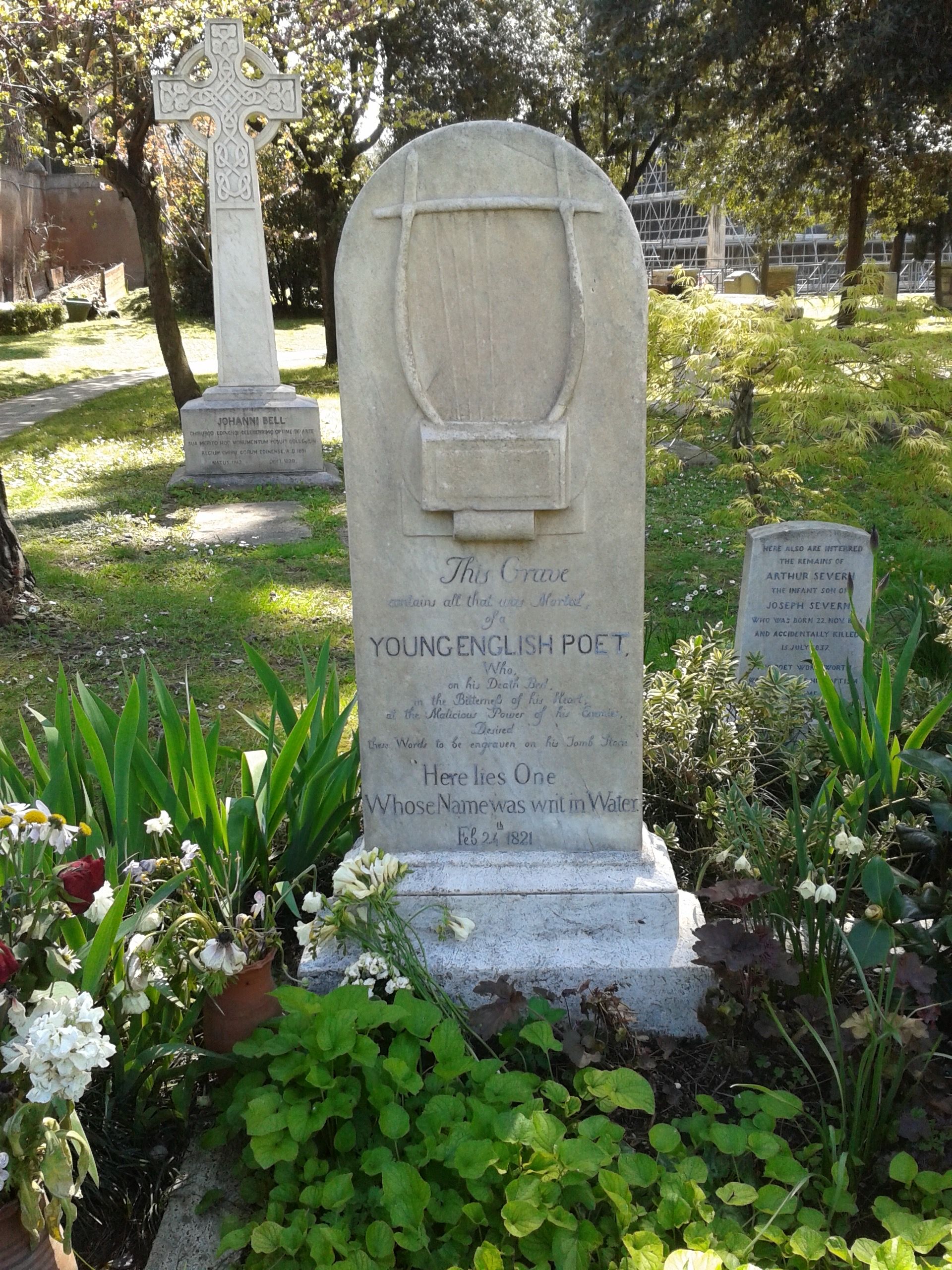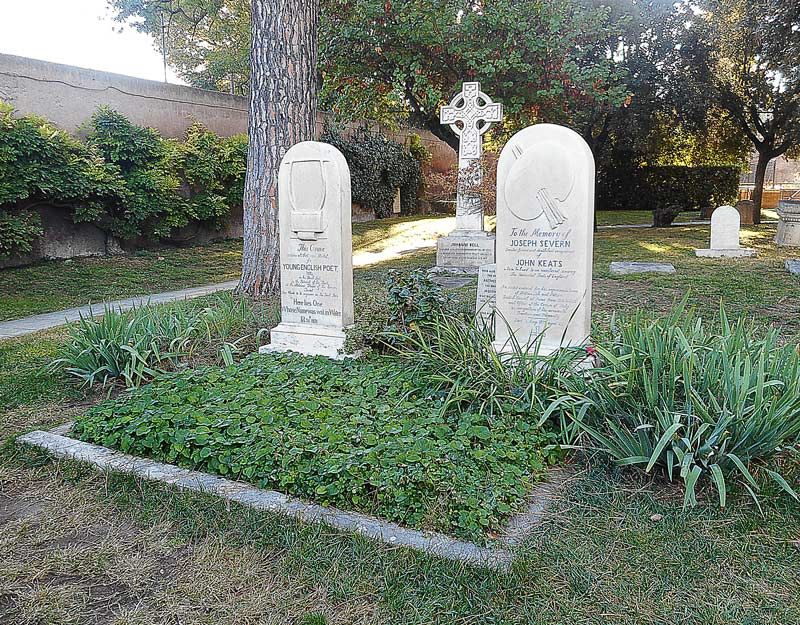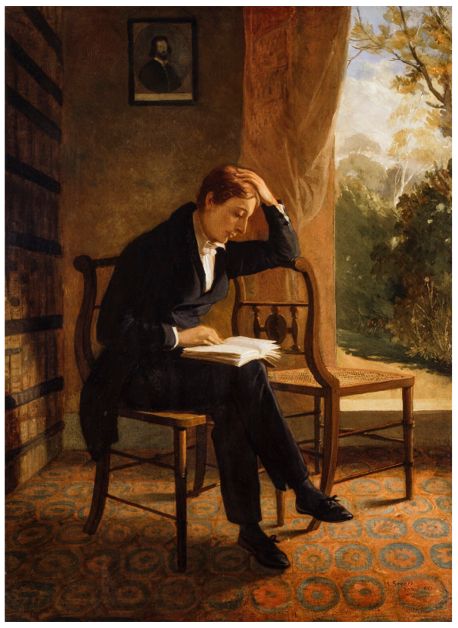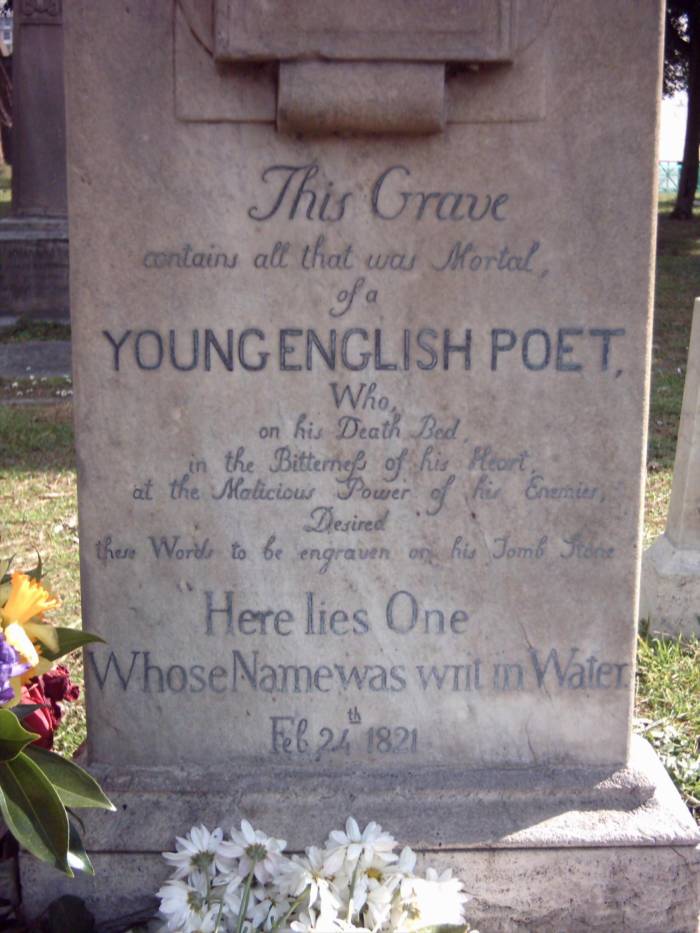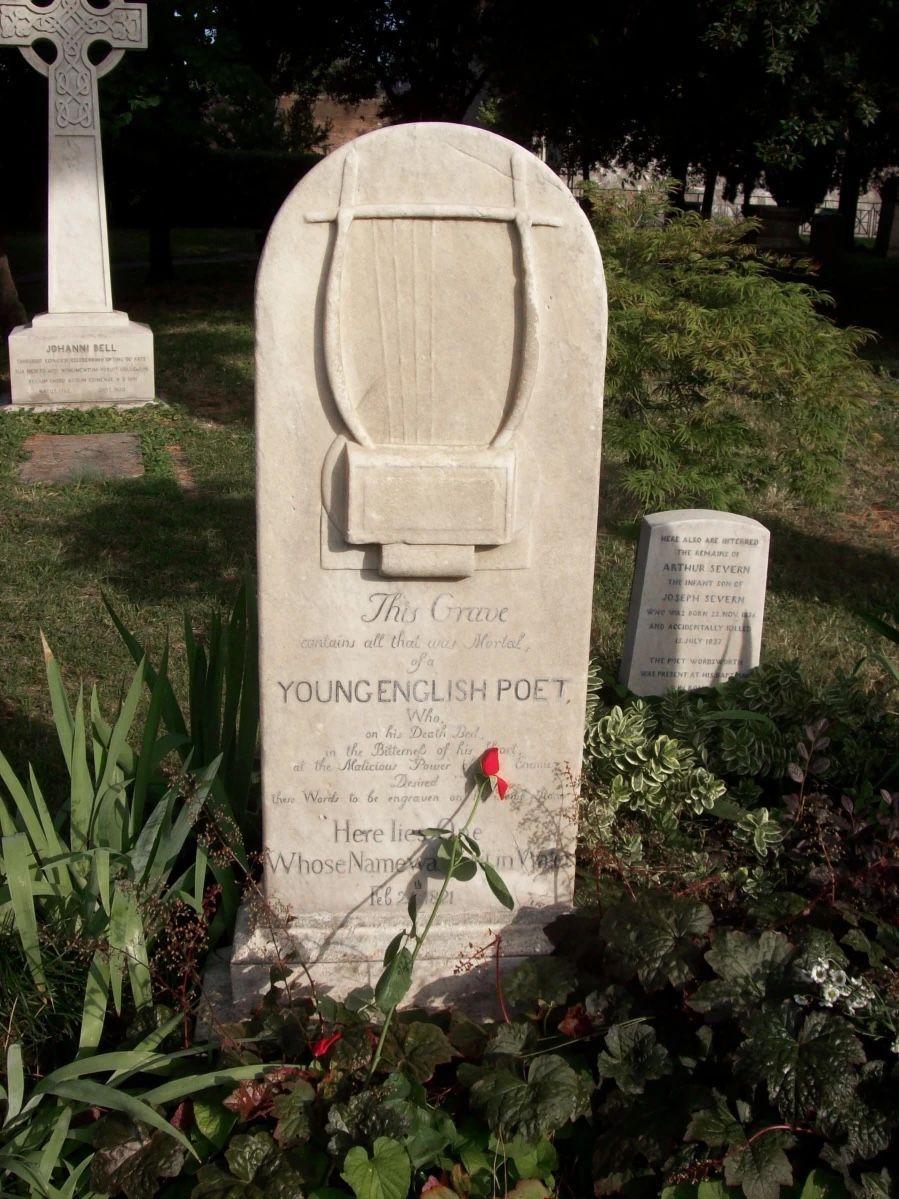Poet. One of the best loved and most admired of all English poets, his odes, sonnets, and narrative poems frequently find a place in modern anthologies of English poetry, and continue to be popular. Keats died in Rome at the age of 25, from the great killer of the time, tuberculosis, which he had probably contracted from his younger brother Tom, whom he had helped nurse, and who had died of the same disease three years before. He had moved to Rome in the hope that the warmer and gentler climate would help him find a cure, and taken lodgings with the artist Joseph Severn at No. 26, Piazza di Spagna (the famous "Spanish Steps"). Severn proved the best of friends, nursing Keats through his last illness, looking after his affairs, and protecting him from the sordid attentions of the grasping landlady. He helped Keats in every desire he had, except the laudanum overdose by which to end it all. Keats' final days and hours are touchingly preserved in Severn's letters. Nine days before he died, Keats requested that his gravestone should bear the simple words, "Here lies one whose name is writ in water". So little had contemporary reaction caused him to suppose his poetry would live on. Severn almost carried out this request, but one of Keats' executors, Charles Brown, a literary friend of Keats who had felt very bitter about Keats' treatment by the critics, suggested the fuller form which it now has, "This Grave contains all that was Mortal, of a YOUNG ENGLISH POET Who, on his Death Bed, in the Bitterness of his Heart, at the Malicious Power of his Enemies, Desired these Words to be engraven on his Tomb Stone - Here lies One Whose Name was writ in Water, Feb 24th 1821". Above the inscription is the carving of a lyre, with half its strings missing. This was designed by Severn. It is more than significant that Shelley, who drowned with a copy of Keats' 1820 publication in his pocket, and Severn himself, who died long after in 1879, are buried nearby. (Bio by Martin Porter).
Poet. One of the best loved and most admired of all English poets, his odes, sonnets, and narrative poems frequently find a place in modern anthologies of English poetry, and continue to be popular. Keats died in Rome at the age of 25, from the great killer of the time, tuberculosis, which he had probably contracted from his younger brother Tom, whom he had helped nurse, and who had died of the same disease three years before. He had moved to Rome in the hope that the warmer and gentler climate would help him find a cure, and taken lodgings with the artist Joseph Severn at No. 26, Piazza di Spagna (the famous "Spanish Steps"). Severn proved the best of friends, nursing Keats through his last illness, looking after his affairs, and protecting him from the sordid attentions of the grasping landlady. He helped Keats in every desire he had, except the laudanum overdose by which to end it all. Keats' final days and hours are touchingly preserved in Severn's letters. Nine days before he died, Keats requested that his gravestone should bear the simple words, "Here lies one whose name is writ in water". So little had contemporary reaction caused him to suppose his poetry would live on. Severn almost carried out this request, but one of Keats' executors, Charles Brown, a literary friend of Keats who had felt very bitter about Keats' treatment by the critics, suggested the fuller form which it now has, "This Grave contains all that was Mortal, of a YOUNG ENGLISH POET Who, on his Death Bed, in the Bitterness of his Heart, at the Malicious Power of his Enemies, Desired these Words to be engraven on his Tomb Stone - Here lies One Whose Name was writ in Water, Feb 24th 1821". Above the inscription is the carving of a lyre, with half its strings missing. This was designed by Severn. It is more than significant that Shelley, who drowned with a copy of Keats' 1820 publication in his pocket, and Severn himself, who died long after in 1879, are buried nearby. (Bio by Martin Porter).
Inscription
This Grave contains all that was mortal, of a YOUNG ENGLISH POET, who on his death bed, in the bitterness of his heart, at the malicious power of his enemies, desired these words to be engraven on his tombstone:
"Here lies one whose name was writ in the water"
Family Members
Advertisement







